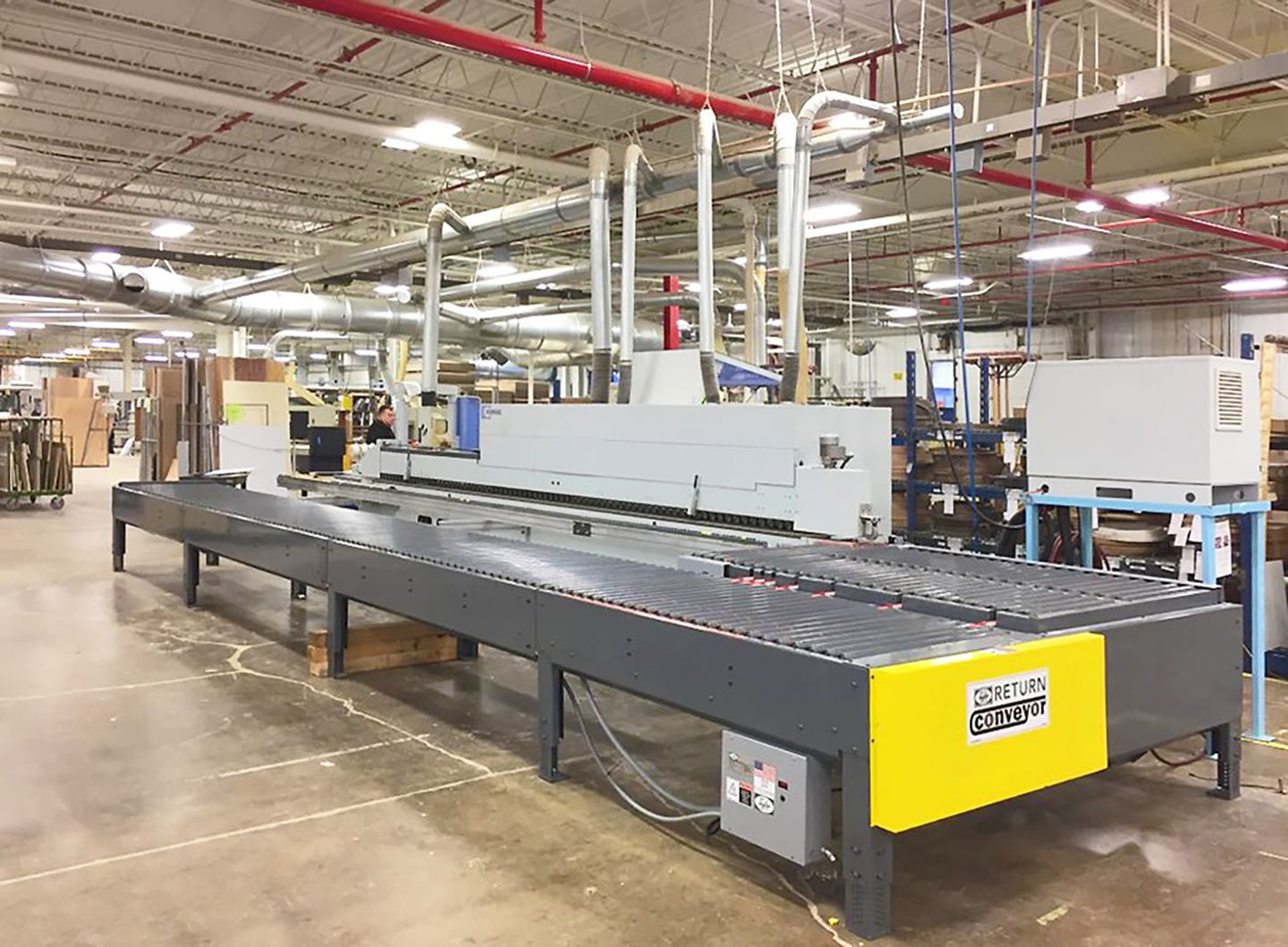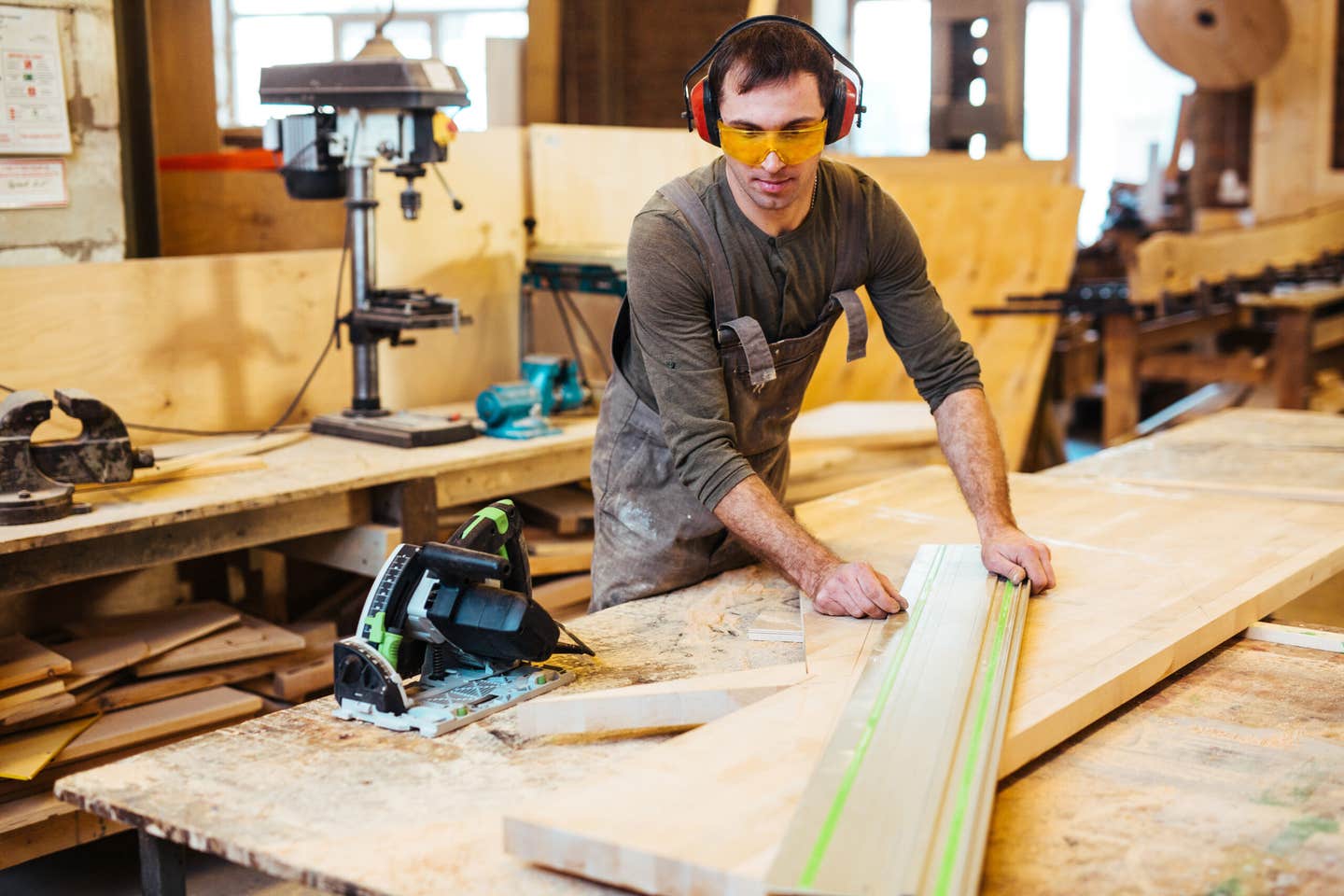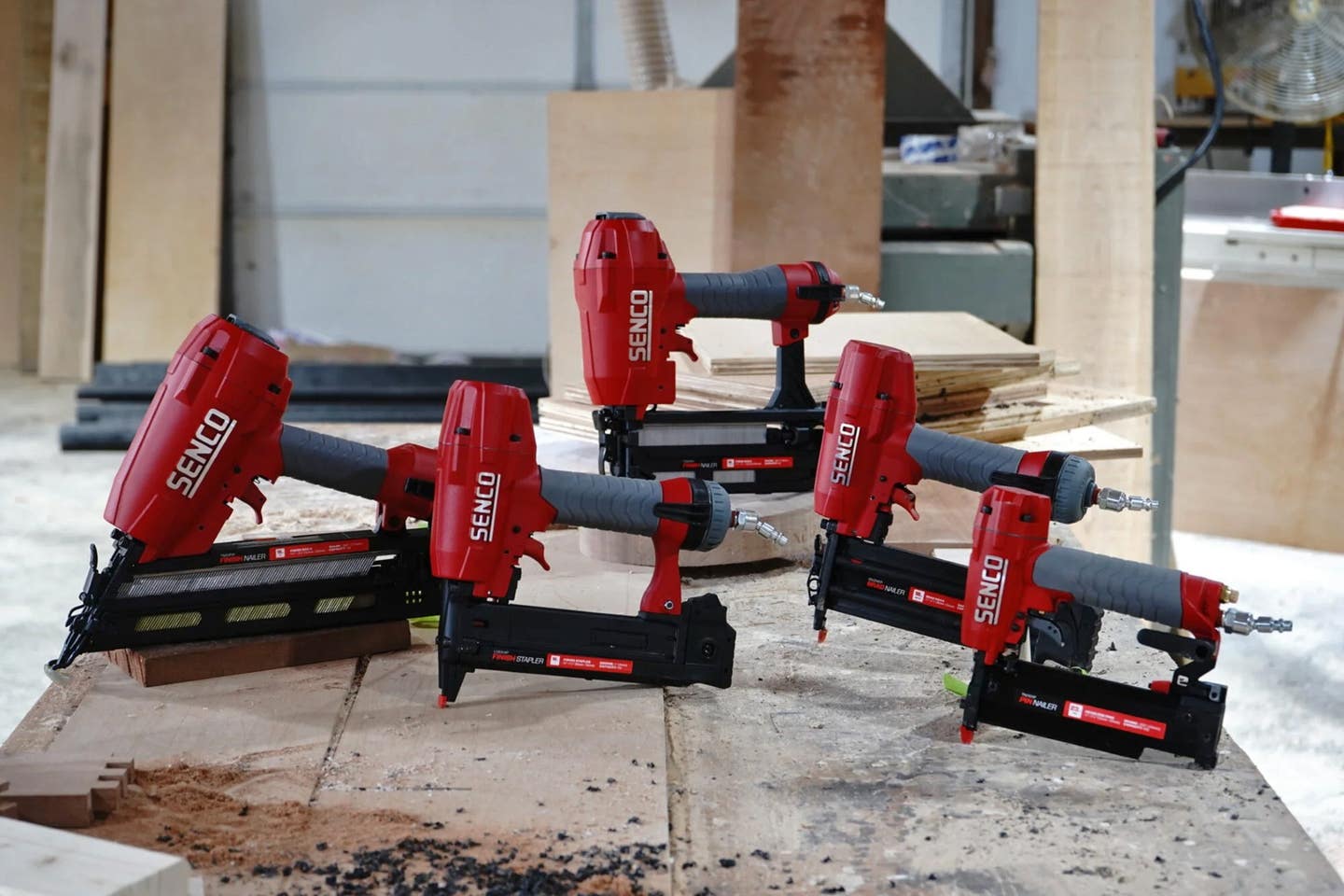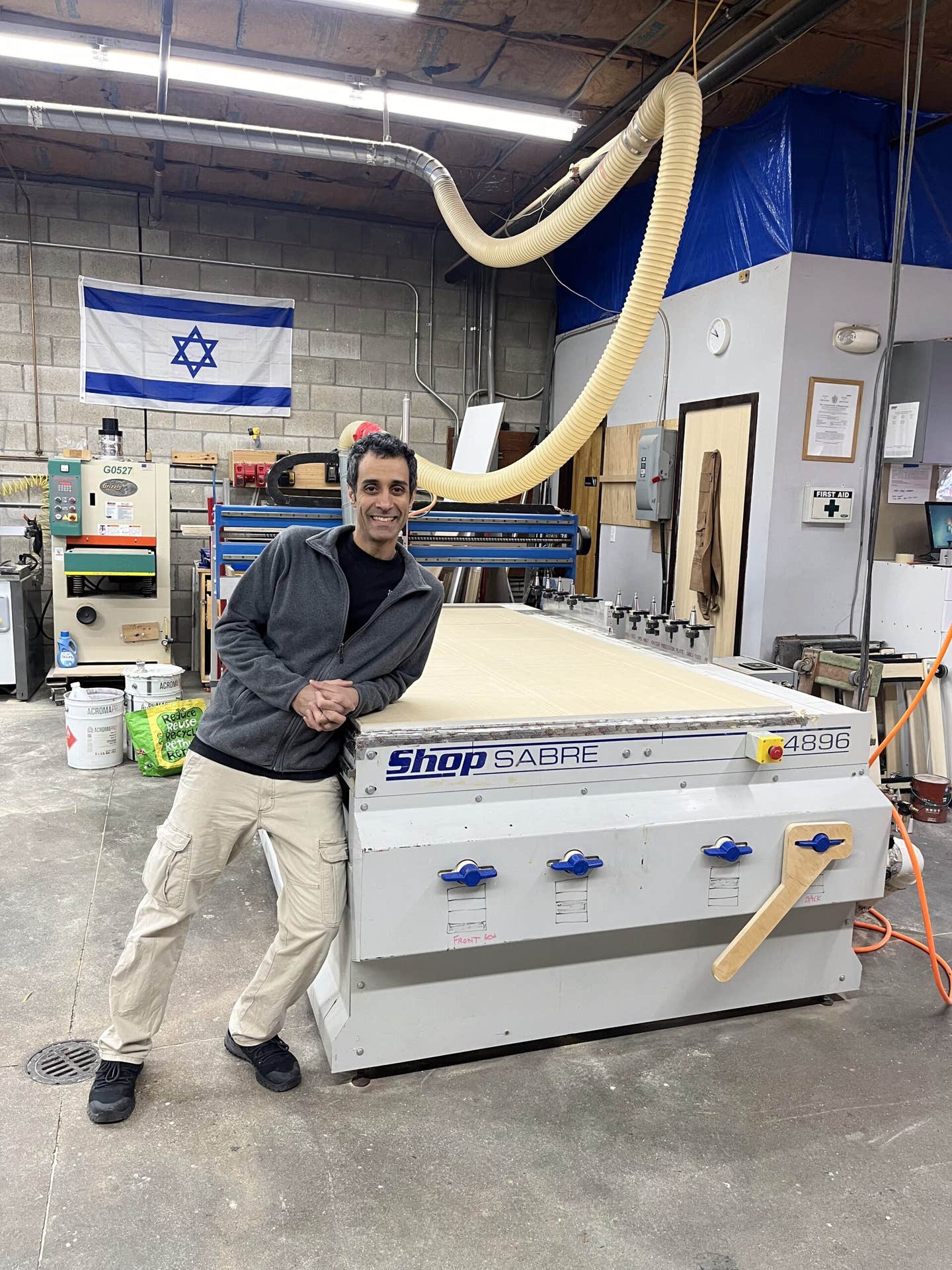Under pressure
Beyond the materials we choose, there are three key factors that affect the quality of work. These are the amount and color of light; the sharpness of tools and cutters;…
Beyond the materials we choose, there are three key factors that affect the quality of work. These are the amount and color of light; the sharpness of tools and cutters; and the security and strength of clamps and hold-downs.
This latter has always been a bit of a challenge. Too much force can mar the surface, while too little can allow the part to move as it is worked. And a clamp that gives a little under pressure can be a nightmare. That was one of the biggest drawbacks to the old pipe clamps: tighten too much and the jaws were no longer parallel because the pipe would bend a little.
Solving that problem gave rise to a new breed of I-beam clamps and the latest version of these is from Bessey Tools (besseytools.com). Ideal for casework, the beam clamps come in lengths from 24” to 96” and they’re incredibly strong. Designed for long life, the castings are powder-coated and the rails are nickel-coated. Each clamp has four hardened steel clutch plates and a decently sized crank handle that delivers up to 7,000 lbs. of pressure, according to the company.
Another recent Bessey Tools innovation is the TW16AW19 system. This is an adaptor for woodworkers to use metalworking solutions from the company’s TW and TWV clamping lines on a cabinetmaker’s bench. It pops into any 3/4” hole in a benchtop or jig and then accepts the 16mm base for all the metalworking fixtures.
Rockler Woodworking & Hardware (rockler.com) has also recently addressed the problem of bowing. That company’s solution is a heavy-duty F-style bar clamp that comes with a lifetime guarantee. Developed in partnership with the Spanish clamp manufacturer Piher, this new Piston Clamp has an enclosed, double-threaded, piston-style mechanism that delivers very fast tightening. The enclosed design also prevents glue from clogging the threads. But perhaps the nicest feature is that the head advances without rotating and that eliminates any twisting torque that might cause misalignment of parts or marring. The clamp has a 4-3/4” throat depth and comes in 16”, 24” and 32” maximum openings. The bar is cold-rolled steel and features a toothed brake. There’s a flip-up ratcheting handle that delivers a whole lot more leverage than a traditional in-line version, so these bar clamps can deliver more than 2,000 lbs. of pressure. Clamp pads are sold separately.
Storing clamps can also be a challenge. They take up a lot of wall space and larger carts can get so heavy they’re difficult to move about the shop. Jay Bates (jayscustomcreations.com) has come up with a simple, intelligent, space-saving way to store clamps at each workstation. His solution was to attach triangular shaped pairs of supports to a backboard. This lets him sort the various clamps and then store like ones together. It also provides great access and takes up much less floor and wall space. The system is also customizable and quite inexpensive.
Unique solutions
An interesting take on traditional bar clamps is the Sash Clamp Head, which is available through several British suppliers including Faithfull Tools (faithfulltools.com). This is a cast head and tail and the shop makes the bar from wood. While the travel is limited, the clamp is actually unlimited in total length as one just drills holes about an inch in from the edge of a 1” board of any width and/or length. The holes let the woodworker place the tail anywhere it is needed, so this would be an ideal solution for job-site clamping on sawhorses to accommodate larger doors, panels and so on.
Another innovative solution is the relatively new Quick-Release Wonder Dog from Lee Valley & Veritas (leevalley.com; item 05G10.30). It has a fast-acting cam mechanism to speed adjustments. To use it, pop the post into a dog hole in the bench, slide the head against the workpiece and then throw the cam lever to apply clamping force. Curved and irregular shapes can be clamped and two screw holes in the brass head let you attach a custom face of any shape. This delivers perfect holding without marring and it could probably be used on CNC tables. The low-profile head and clamp body are 5/8” and 11/16” thick respectively, so one can plane or mill stock as thin as 3/4” without worrying about hitting the clamp. The 3/4” diameter, 2-3/4” long post can be used anywhere a woodworker can drill a suitably sized hole and it’s actually canted to keep the clamp head against the bench when pressure is applied. The dog has just over 6” of travel and the rod, post and cam lever are all made of steel.
Speaking of CNCs, are you having trouble holding small or thin parts on the CNC bed? If so, take a look at the Pressure Foot accessory from ShopBot Tools (item 13104; store.shopbottools.com). The device allows an operator to clamp and mill small workpieces without using tabs or double-sided tape. It simply attached to the Z-axis and exerts downward force right around the cutter. The ShopBot version works with the company’s PRSalpha, PRSstandard, PRTalpha and PRTstandard tools. Other manufacturers such as Suzhou Rico (www.ricocnc.com) offer universal versions to accommodate different spindle diameters.
Woodshops with a lot of dovetailed drawers to glue and clamp might want to take a look at the latest system from Omec. It consists of one machine that applies glue and a second that automatically clamps the drawer together. The Omec ICA-600 — the glue machine — recently arrived at the Charlotte, N.C. showroom of Macoser Woodworking Machinery (macoserwood.com). This is an automatic hopper-fed system that applies glue to female or male dovetail boards two at a time. The machine then waits for the operator to remove the pieces before applying glue to the next two boards and that’s done while the worker places the previous parts in a pneumatic clamp that delivers a perfectly square, clamped and glued drawer box. The drawer box clamp, the Omec SCM 1200, is unique in that the operator assembles the loose parts in the clamp itself, rather than on a separate bench or workstation. Pneumatic cylinders lock in the drawer sides and springs guide the fronts and backs in place. A pneumatic vacuum holds the drawer bottom while the hydraulic cylinder compresses the box. The total elapsed time from loose parts to completed box is less than one minute. Clamping drawers has come a long way from wet rags and diagonal measurements.
For shops that are constantly shifting between two or three stock thicknesses, Kreg Tool (kregtool.com) has an inspired line of clamps that automatically adjust to those changes. The system is called Automaxx and it is available in a whole array of clamps that run the range from basic pocket hole joinery to almost any kind of work holding. There are one-handed face and bench clamps, and now the company has introduced a selection of six bar clamps 550 to 700 lbs. of force. The gross adjustment is automatic and, if further fine adjustment is needed, there’s a simple thumbscrew that can dial in less or more pressure. Once you dial in the exact amount of pressure you need, these clamps will close with the same force every time.
Irwin Tools (irwin.com) is launching an updated line of one-handed bar clamps and a new line of clamping accessories. The clamps feature a quick-change push button for easy conversion into a spreader or for quick installation of the new accessories, and the swivel jaws are now removable. The heavy-duty clamps are available in six sizes (6”, 12”, 18”, 24”, 36”, 50”) and the medium-duty clamps are available in five sizes (6”, 12”, 18”, 24”, 36”). There are also mini- and micro-clamp sizes.
Two more
And now for something completely different: the Paulk Workbench from FastCap (fastcap.com). This is basically a torsion box with holes in it — a very lightweight, very strong, beautifully engineered job-site bench that accommodates almost any power tool. It has built-in tool storage, a 20mm bench-dog hole system, and is made from multi-lam birch plywood. It comes with a couple of collapsible sawhorses, so the whole shebang can be toted on site by a single installer or finish carpenter. It works as an outfeed table, an assembly table, a milling and cutting center.
Castle Inc. (castleusa.com) has recently redesigned the quick clamps on its line of three differently sized AT Race assembly tables for face frames. Each table’s clamping arm glides on an open beam that allows face frames to extend beyond the top of the table and this gives you more work area to handle oversize frames without taking up extra shop space. The new quick-clamps have dual handles with centered activation and this allows for easy clamping from either direction. The AT Race line includes 5-, 8- and 12-foot wide tables that are built with ergonomics in mind. For example, the location of the bottom rail (32” off the floor) and the angle of the worktop are both designed to reduce operator fatigue.
The security and strength of clamps and holding devices is not only important to the quality of the work. Quality clamps are also an essential part of the effort to keep our employees — and ourselves — safe while we work.
This article originally appeared in the December 2016 issue.







